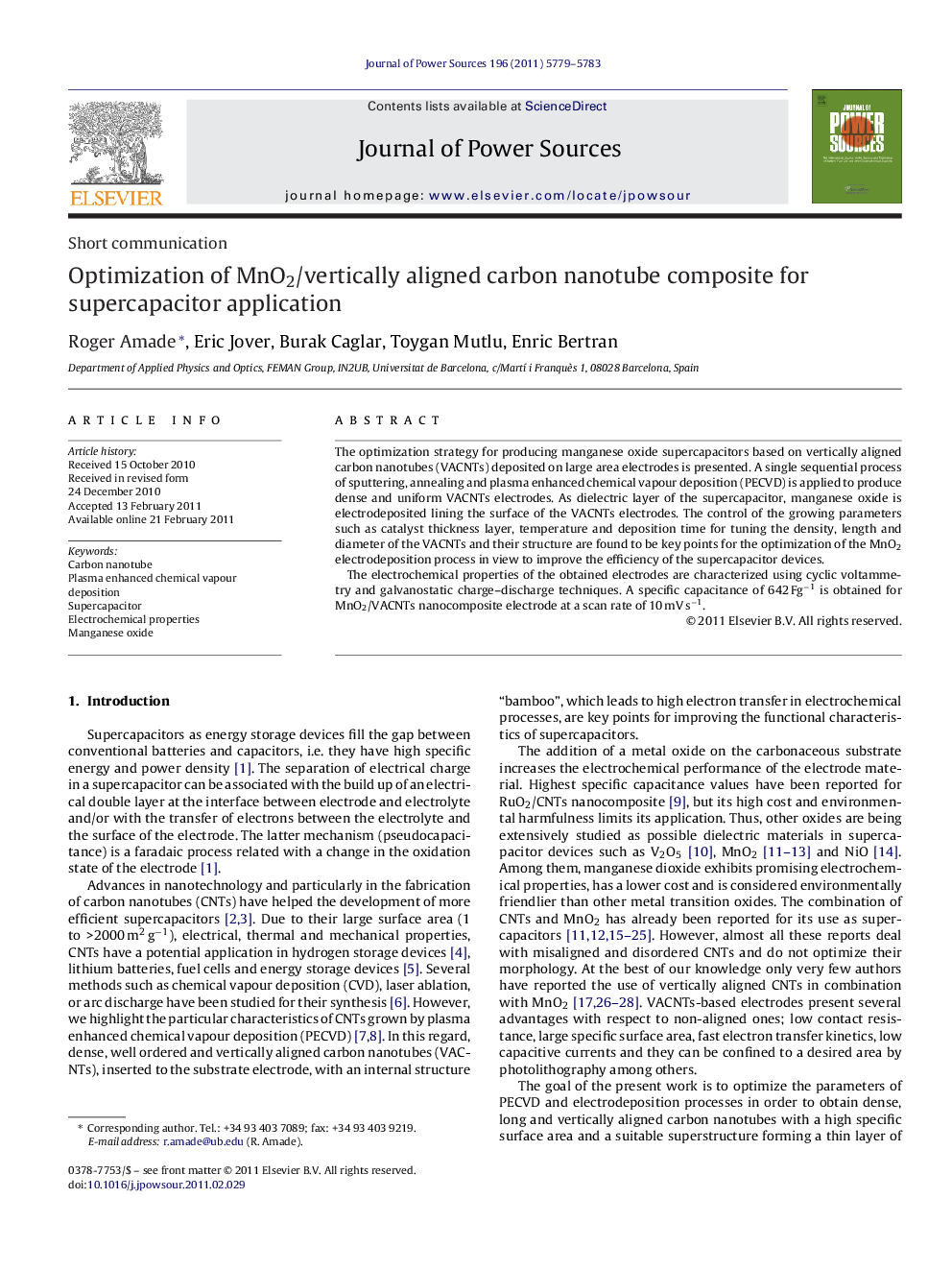| Article ID | Journal | Published Year | Pages | File Type |
|---|---|---|---|---|
| 1293501 | Journal of Power Sources | 2011 | 5 Pages |
The optimization strategy for producing manganese oxide supercapacitors based on vertically aligned carbon nanotubes (VACNTs) deposited on large area electrodes is presented. A single sequential process of sputtering, annealing and plasma enhanced chemical vapour deposition (PECVD) is applied to produce dense and uniform VACNTs electrodes. As dielectric layer of the supercapacitor, manganese oxide is electrodeposited lining the surface of the VACNTs electrodes. The control of the growing parameters such as catalyst thickness layer, temperature and deposition time for tuning the density, length and diameter of the VACNTs and their structure are found to be key points for the optimization of the MnO2 electrodeposition process in view to improve the efficiency of the supercapacitor devices.The electrochemical properties of the obtained electrodes are characterized using cyclic voltammetry and galvanostatic charge–discharge techniques. A specific capacitance of 642 Fg−1 is obtained for MnO2/VACNTs nanocomposite electrode at a scan rate of 10 mV s−1.
Research highlights► PECVD growth process parameters are optimized to obtain long and dense VACNTs. ► Galvanostatic and potentiostatic anodic deposition of manganese oxide are compared. ► Galvanostatic anodic deposition shows better results than potentiostatic deposition. ► Optimized VACNTs/MnO2 electrodes show good electrochemical performance.
